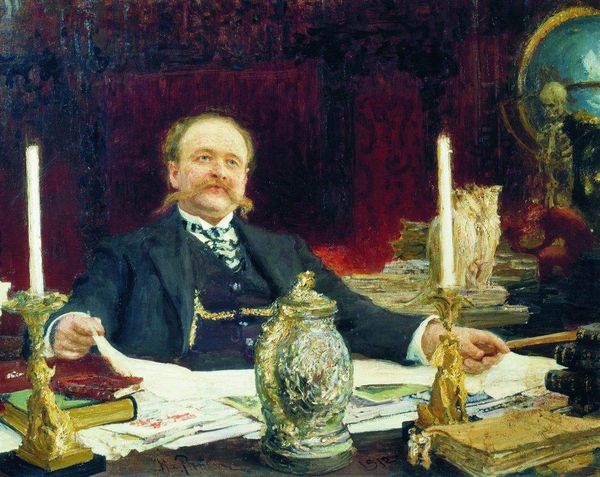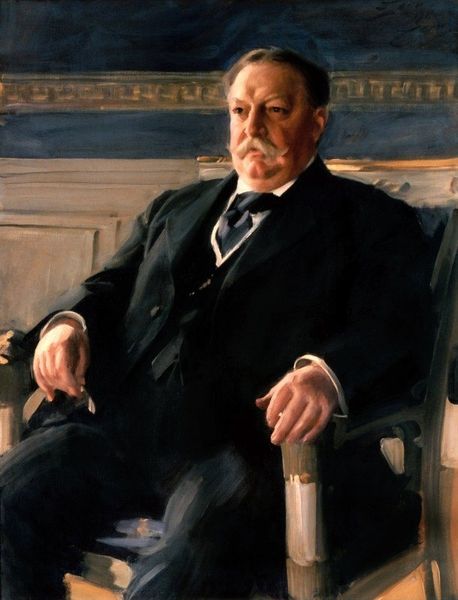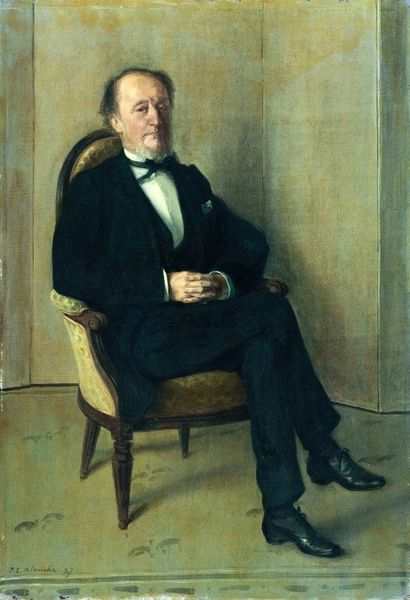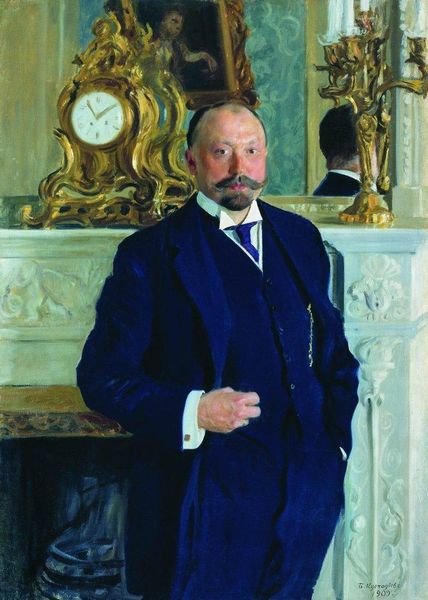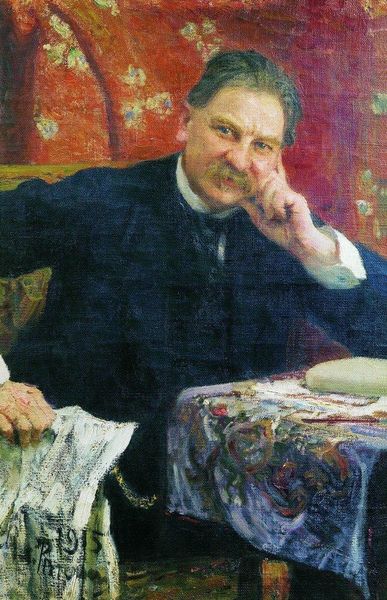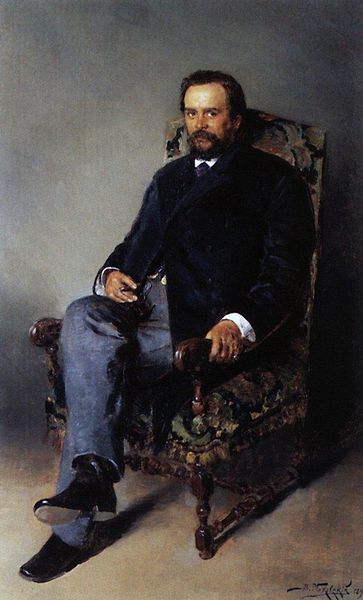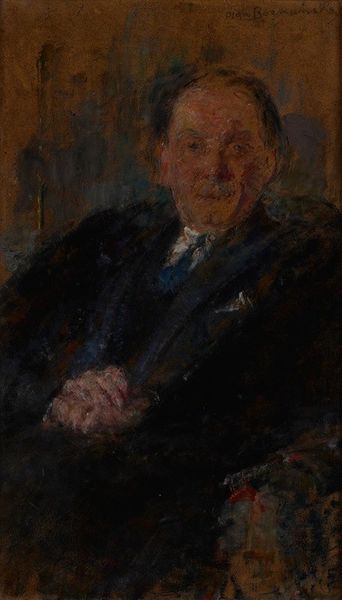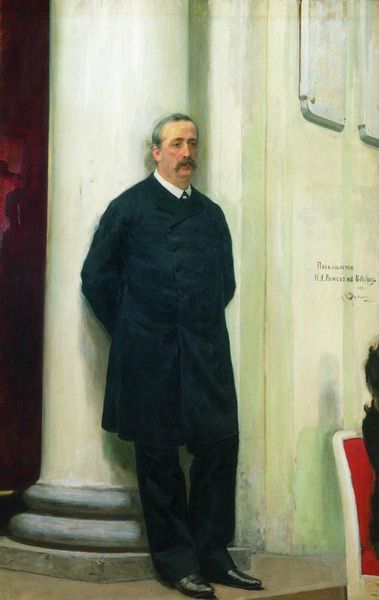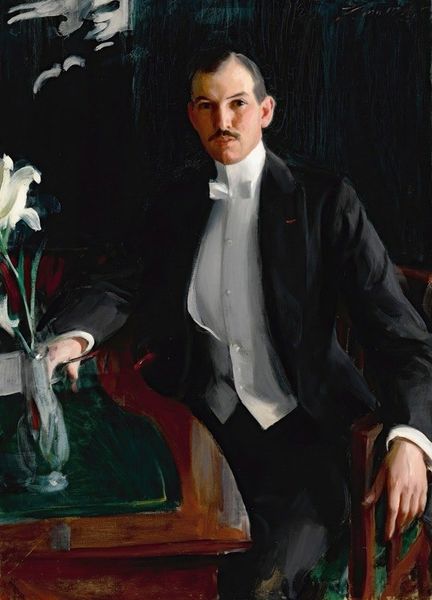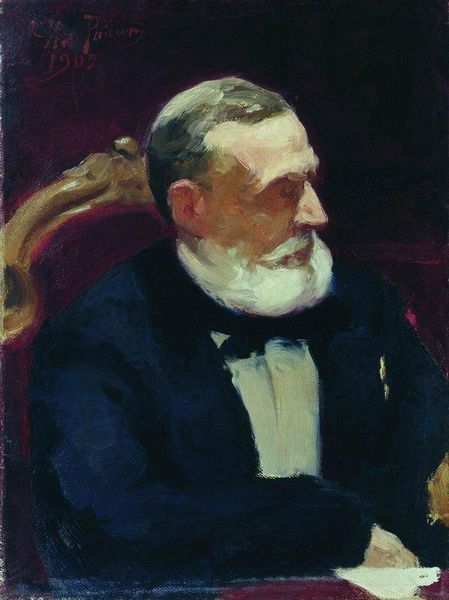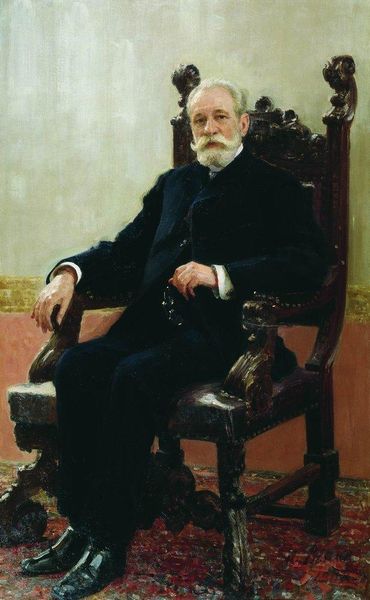
Copyright: Public domain
Editor: This is Ilya Repin's 1908 painting, "Portrait of B.A. Kaminka," done in oil. It has an interesting blend of formal portraiture and more fluid, impressionistic brushwork. The man looks affluent and comfortable, but there's a certain tension in his expression. What's your read on this portrait? Curator: Looking at Repin's "Portrait of B.A. Kaminka" through an activist lens requires us to consider the socio-political context. This portrait was created in 1908, a time of immense social upheaval in Russia, before the revolution of 1917. How does understanding this period of turmoil affect your interpretation? Editor: It makes me think about Kaminka's position in society at the time, perhaps belonging to an elite class that was about to undergo significant changes. Curator: Precisely. The red leather sofa and ornate details of his study signal wealth and privilege. Yet, there's a stiffness in his posture and a guardedness in his eyes. Do you think this hints at an awareness of the precariousness of his social standing? How might anxieties about societal shifts manifest in a portrait like this? Editor: I see what you mean. He's not relaxed, he's posed. Maybe the portrait itself is a statement – a desire to be remembered in a certain way despite what was to come. Curator: Indeed, portraiture has historically served as a tool for constructing and reinforcing identity and social status. Recognizing that portraits were accessible only to certain groups offers a glimpse into their dynamics. So what does this mean to you? Editor: That looking closely at the portrait as an historical document gives a richer sense of both the individual and the complex social conditions he lived in. Curator: Exactly! Recognizing portraits as cultural objects reflects prevailing power structures. Considering Kaminka’s history really enhances the viewer’s perspective.
Comments
No comments
Be the first to comment and join the conversation on the ultimate creative platform.
